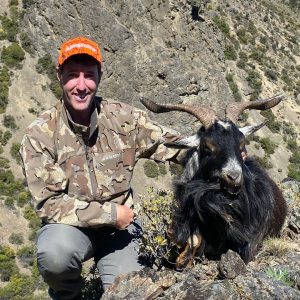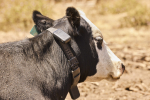Judging by presentations at one of a recent series of Beef + Lamb New Zealand workshops, making more and smarter management decisions based on scanning data can dramatically cut losses, raising profits.
Speaker Peter Young, a farm adviser from Alexandra, says typically scanning results are used to identify dries and split flocks into multiple and single-carrying mobs. “But that’s about the extent it.”
In many cases more management decisions could be made from the data, helping reduce losses in that year, and drive flock performance further into the future. “It’s not just about the information; it’s what you do with it.”
For example, besides using scan data to determine stocking rate for set stocking singles and multiples, for about 20c/ewe extra scanners can age foetuses, allowing timing of set stocking to be fine-tuned.
“If you set stock them all at the same date and some aren’t due to lamb until four weeks after that date, there’s the potential for problems there,” Young warns.
While it’s well known a ewe’s feed demand increases rapidly towards her due date, especially for those carrying twins, understanding the detail of that (see table) is key.
Having foetal age data is particularly advantageous on farms with a range of country – hill, flat, different soils, aspects and altitudes – so lambing dates can be matched to when spring growth starts across different blocks of the farm.
Set stocking too early not only wastes feed, it risks ewes putting on too much condition, being less fit and having more lambing difficulties, he warns. It can also hit pasture production throughout the spring.
“Once you’re on top of the pasture cover early, you stay on top of it for a long-time.”
As a guide, Young suggests comparing covers at tailing to what ewes were put onto at set stocking. “If it’s about the same, you’ve got it [stocking rate and date] about right. If it’s lower, perhaps you need to lower your stocking rate.”
Tailing should coincide with peak milk production for the ewe and if feed has been restricted lambing to tailing, milk production, and lamb growth, is lost – irreparably.
“If at tailing time your covers are low the damage is done.”
Young suggests using foetal aging to split ewes into those due in the first ten days, second ten days and last fortnight of mating. Typically 65-70% of ewes should be due in that first period, with 25-30% in the second and 5-15% in that last fortnight.
Delaying set stocking those second and third groups by ten days can have “quite a dramatic” effect on pasture cover. “There’s the potential for 250kgDM/ha growth in that 10 days.”
Lambing paddocks will also be growing that much faster if ewes are put on to them later.
Work by Massey University shows cover length at lambing is a key factor in mis-mothering, he notes.
Below-optimal covers mean ewes have to forage further and longer to eat their fill resulting in more lambs being mis-mothered.
“At 1200kgDM/ha the ewe can eat her requirement but she takes longer than if the cover was 1500-1700kgDM/ha. At that she’s getting more per mouthful. Any less and she’s spending more time away eating, and less time being a stay-at-home mum, which means there’s more time for the youngsters to get into trouble.”
Set stocking as late as possible also minimises the risk of overfat ewes that take too long to lamb. That’s particularly a problem with multiple births when the firstborn may wander off while its siblings arrive, notes Young.
In his own case, before chronic back and knee problems prompted him to sell his farm a few years ago, he found giving ewes a 1km/day walk and “not allowing them to dawdle” worked wonders, slashing birthing problems and mis-mothering.
“It also helped us identify any ewes that were on the edge of being a bit staggery earlier. We’d put them straight out on to ad-lib grass. It had a big effect on reducing our ewe deaths.”
At 20c/ewe, Young reckons foetal aging is a no-brainer, assuming the data is acted on. “The cost of it just isn’t an issue. If you can’t save three lambs/1000 ewes with that sort of information then you shouldn’t be in farming, I reckon.”

















